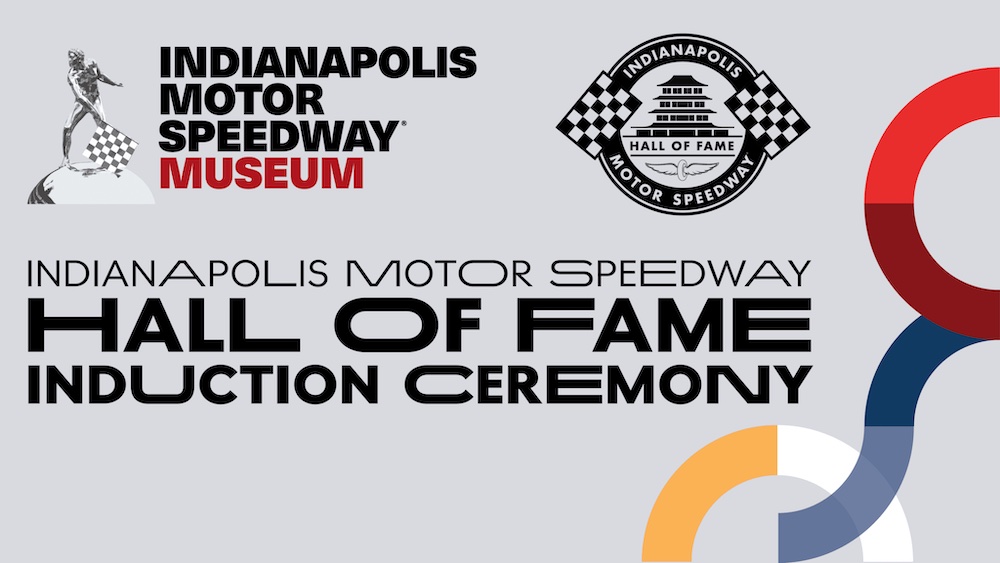The Indianapolis Motor Speedway Museum recently announced the Indianapolis Motor Speedway Hall of Fame Class of 2023 Inductees Tim Cindric and Tony George. The inductees will be formally celebrated at the Hall of Fame Induction Ceremony, and Dinner presented by Shell and supported by National Bank of Indianapolis, to be held on the evening of Friday, May 26, at the Indiana Roof Ballroom.
The two were chosen from a ballot of 14 nominees by a national panel of more than 150 journalists, participants, and historians.
Tim Cindric currently serves as President of Team Penske. Cindric has overall management responsibility for Team Penske’s racing operations which includes teams competing in the NTT IndyCar Series, the NASCAR Cup Series, the IMSA WeatherTech SportsCar Championship, and the World Endurance Championship.
Cindric grew up working with his father, Carl, who was an IndyCar engine builder for IMS Hall of Fame member Herb Porter. A basketball standout and a Hall of Fame member of Pike High School (Indianapolis, Ind.) and Rose-Hulman Institute of Technology, where he recently received an honorary doctorate in engineering after graduating in 1990 with a Bachelor of Science in Mechanical Engineering.
After graduation, Cindric began his career with the TrueSports IndyCar team as a design engineer, then served as Team Manager for Team Rahal prior to joining the Penske organization as President in the fall of 1999. His 24-year career with Team Penske consists of more than 375 victories and 27 championships. His successes at the Indianapolis Motor Speedway include eight Indianapolis 500 wins, eight IndyCar victories at the IMS Road Course, a Brickyard 400 win, and two NASCAR Xfinity Series victories.
In addition, Cindric served as race strategist for Helio Castroneves’s first three Indianapolis 500 wins and currently serves in this capacity for the No. 2 Team Penske Chevrolet, driven by Josef Newgarden, the two-time INDYCAR SERIES champion.
Tony George began his tenure as President and CEO of the Indianapolis Motor Speedway Corporation in 1989, continuing the work his grandfather, Anton “Tony” Hulman, Jr, started when he purchased the Speedway at the end of World War II. He served in this role until 2009. George joins his grandfather, grandmother, Mary Fendrich Hulman, and his mother, Mari Hulman George, in the Hall of Fame.
Under George’s leadership, the Indianapolis Motor Speedway underwent significant changes. Before George assumed the role, the Speedway traditionally only had one race, Indianapolis 500. Determined to bring more events and different racing styles to the Speedway, George announced the addition of a NASCAR race, The Brickyard 400, which debuted in 1994.
Continuing to grow the events and programming, George also helped bring Formula 1 back to the United States by hosting the United States Grand Prix in 2000, which ran through the 2007 season. Hosting the Formula 1 race involved the construction of the road course inside the oval. The road course was also the home to the MotoGP event, held from 2008 through 2015. The road course continues to be used for IndyCar and NASCAR events, among others, throughout the racing season.
George also oversaw the construction of the current iteration of the Pagoda at the Indianapolis Motor Speedway. The Pagoda has nine tiers and reaches a height of 153 feet, equal to a 13-story building. The Pagoda has state-of-the-art facilities for race control, safety, timing and scoring, and radio broadcast booths. In addition to the Pagoda, the media center was constructed, and the tower terraces were rebuilt along with the suites behind Tower Terrace south. All of these new elements were designed to serve the Indianapolis 500 and other racing events that take place through the course of the year.
George has made a lasting impact on the sport of racing outside of the Indianapolis Motor Speedway. With a desire to improve the safety conditions for drivers, George enlisted the University of Nebraska-Lincoln to develop a new wall barrier for race tracks to reduce driver impact. The Steel and Foam Energy Reduction Barrier (SAFER Barrier) was installed at the Indianapolis Motor Speedway in 2002. The technology is still used and installed in numerous other racetracks.
Read more at VintageMotorsport.com.
